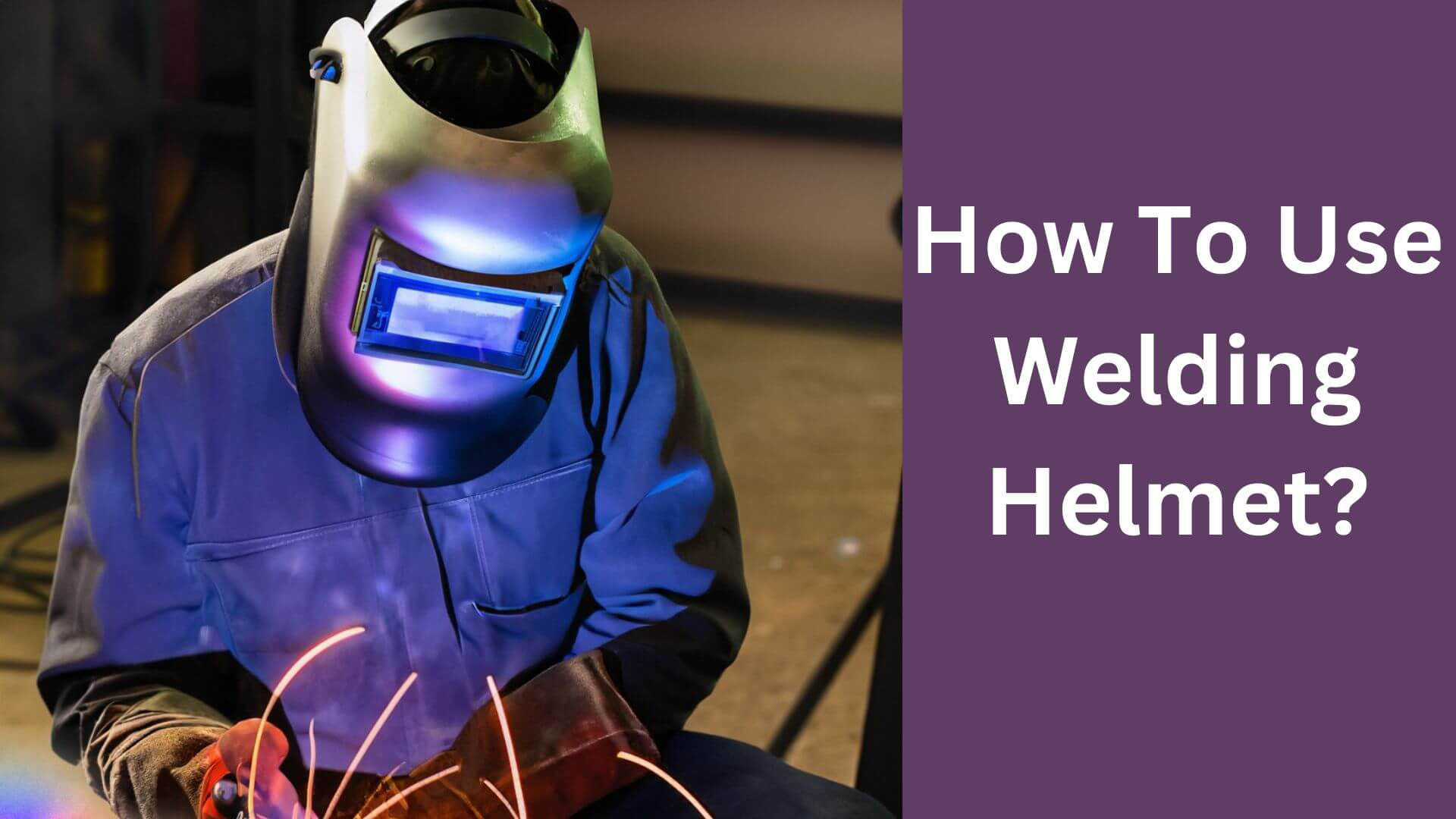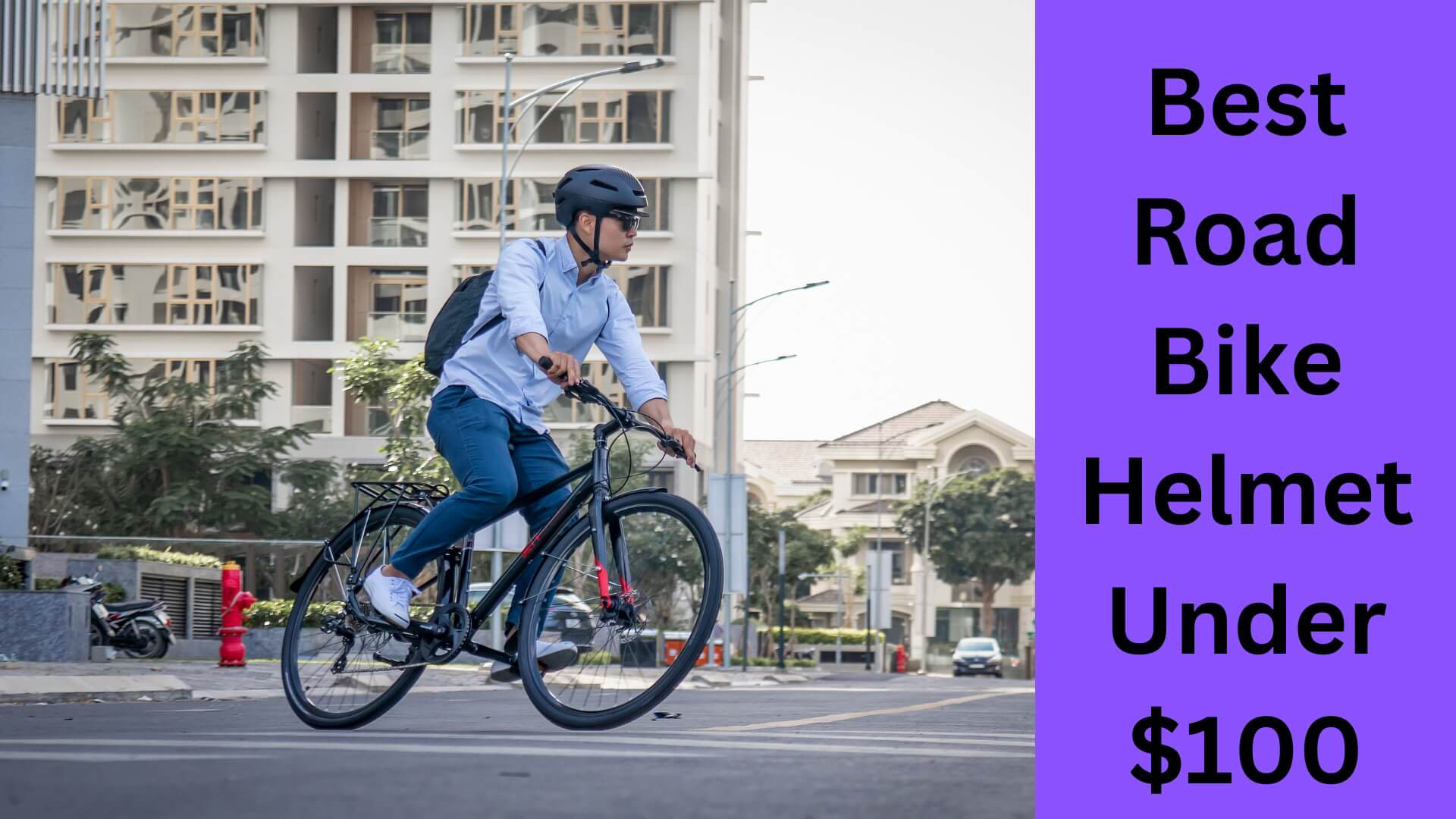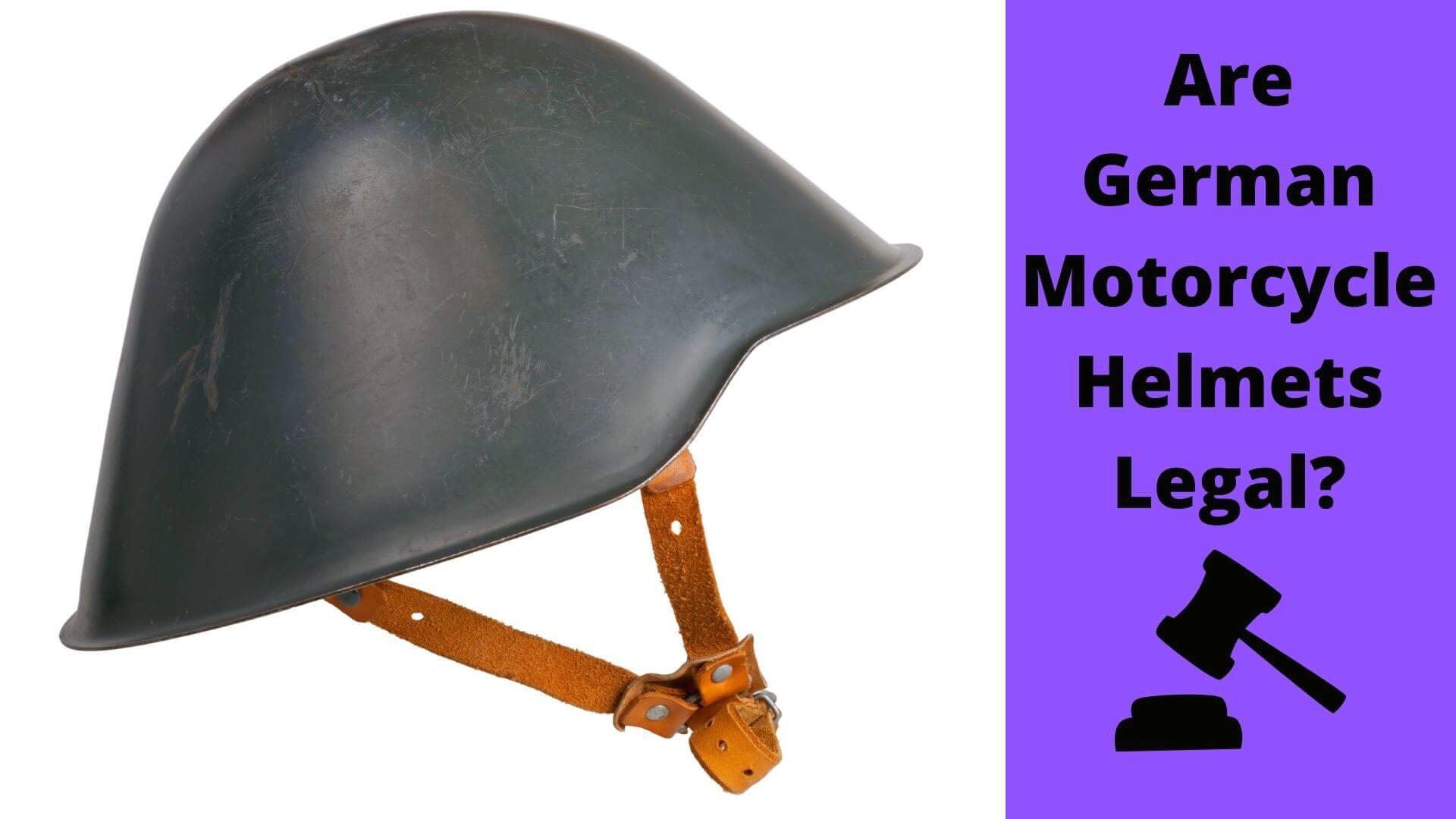How to Tell If a Welding Helmet Is Working?
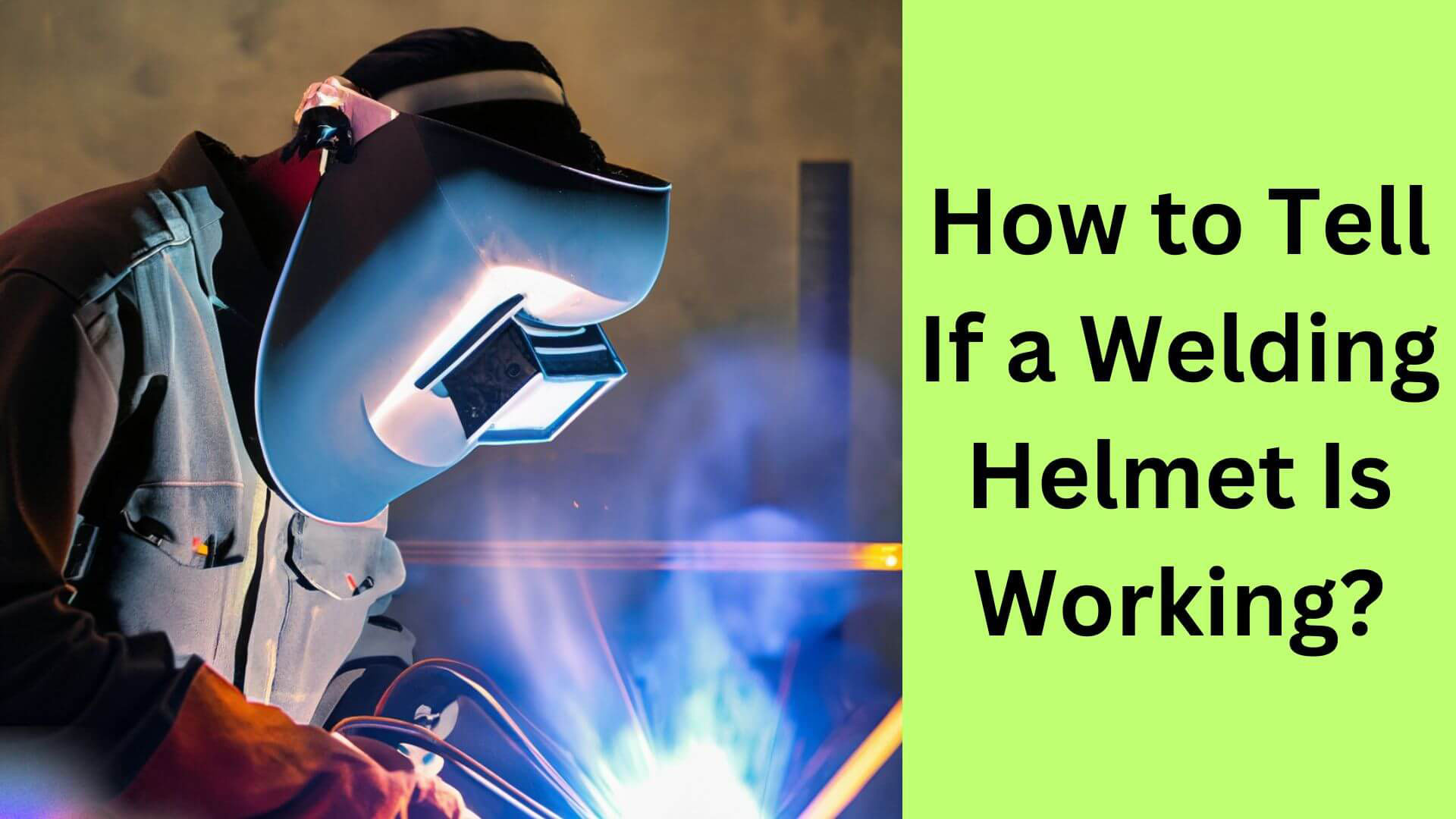
Welding helmets are essential for any welder, as they protect the eyes and face from the intense light, heat, and sparks produced during welding.
However, the effectiveness of a welding helmet depends on its ability to filter out harmful ultraviolet and infrared rays. So, how do you tell if your welding helmet is working correctly?
The answer is: To tell if a welding helmet is working, you can perform a simple test by holding the helmet in front of a bright light source and looking through the lens.
The helmet functions appropriately if the lens is dark and the light is blocked. You can also check the sensitivity and delay settings and ensure the headgear is secure and comfortable.
In this article, we will explore the key features that determine if a welding helmet is working and how to ensure that it provides optimal protection to the welder.
Understanding The Importance Of A Welding Helmet
Welding is rewarding but can also be hazardous if you must be equipped with the necessary protective gear.
A welding helmet is a crucial piece of equipment every welder must have. It is the primary source of protection for your eyes and face while welding.
The Role Of A Welding Helmet In Protecting A Welder’S Eyes And Face From Harmful Radiation
A welding helmet protects your face and eyes from the harmful radiation and bright light produced during welding. Welding arcs generate intense ultraviolet (UV) radiation, which can cause skin burns and long-term damage to your eyesight.
Here are some of the ways that a welding helmet protects you:
- Filters out UV and IR radiation: The helmet’s lens protects your face and eyes from UV and IR radiation produced by welding, which can cause photokeratitis, cataracts, and other eye injuries.
- Protects against bright light: The helmet also shields your eyes from the bright light produced by welding, which can cause retinal damage.
- Guards against debris and sparks: The helmet protects against debris and sparks created during welding, which can cause skin burns and other injuries.
The Types Of Welding Helmets Available In The Market
There are various types of welding helmets available in the market, including:
- Fixed shade welding helmets: These are the most affordable and straightforward. They have a fixed shade lens that protects your eyes from a fixed light intensity level.
- Variable shade welding helmets: These adjustable lenses can alter the shade’s level and vary from light to dark, depending on your welding environment.
- Auto-darkening welding helmets: These helmets are the most popular and technologically advanced. They have adjustable lenses that automatically change shades as welding begins and stops, providing optimal protection for your eyes from harmful radiation. Auto-darkening helmets come in various shades, depending on the welding process and environment.
Having a proper welding helmet is fundamental for anyone who works in welding. Don’t skimp on a welding helmet; your safety and well-being depend on it.
With the available information and knowledge about the wide variety of welding helmets, you can choose the perfect helmet that fits your requirements and budget.
Remember, welding is an enjoyable activity when adequate protective measures are in place.
Read More: Unleashing the Truth Behind the Necessity of Welding Helmets
How To Tell If A Welding Helmet Is Working: Evaluating The Lens Shade
1. Significance Of Lens Shade In Welding Helmets
When we think of welding helmets, we think of a protective shield that protects our face and eyes from the dangerous light and radiation produced during welding. But did you know that selecting the right lens shade is equally essential for your safety?
Here are some key points behind the significance of lens shade in welding helmets:
- Lens shade determines the protection level from the welding arc’s brightness.
- It prevents eye strain, discomfort, and possible exposure to ultraviolet radiation.
- An appropriate lens shade promotes clear vision, ensuring precise welding work.
2. Factors To Consider While Choosing A Lens Shade
Choosing the correct lens shade depends on the type of welding job and the thickness of the metal being welded. Here are some factors to consider while selecting the lens shade:
- Welding type: For example, tig welding requires a lower lens shade, while MIG welding requires a higher one.
- Amperage: The higher the amperage, the darker the lens shade required.
- Metal thickness: Thicker materials require higher lens shades.
3. To Check The Appropriate Lens Shade
Choosing an appropriate lens shade is critical to ensure your safety while welding. Here’s how you can test if the lens shade is appropriate for the welding job:
- Use the manufacturer’s recommendations as a guide for selecting the shade range.
- Start with the lightest suggested shade and adjust it gradually with each welding job to determine the perfect shade that suits you best.
- Look directly at the welding arc through the helmet. Your lens shade is appropriate if you can see it comfortably and clearly.
4. The Dangers Of An Inappropriate Lens Shade
Using an inappropriate lens shade can expose you to various risks, from eye strain and fatigue to long-term vision problems. Here are some of the dangers of an inappropriate lens shade:
- Failure to protect your eyes and face from the brightness of the welding arc.
- Eye strain and discomfort due to the exposure to the glare of the welding arc.
- Exposure to dangerous ultraviolet radiation leads to long-term vision problems.
In essence, wearing a welding helmet alone isn’t sufficient for your safety; selecting the right lens shade is equally crucial.
Follow the manufacturer’s recommendations and the above factors to ensure your welding helmet offers maximum protection during welding.
Read More: Unveiling the Magic Behind Welding Helmet Wizardry
Checking For Comfort And Convenience
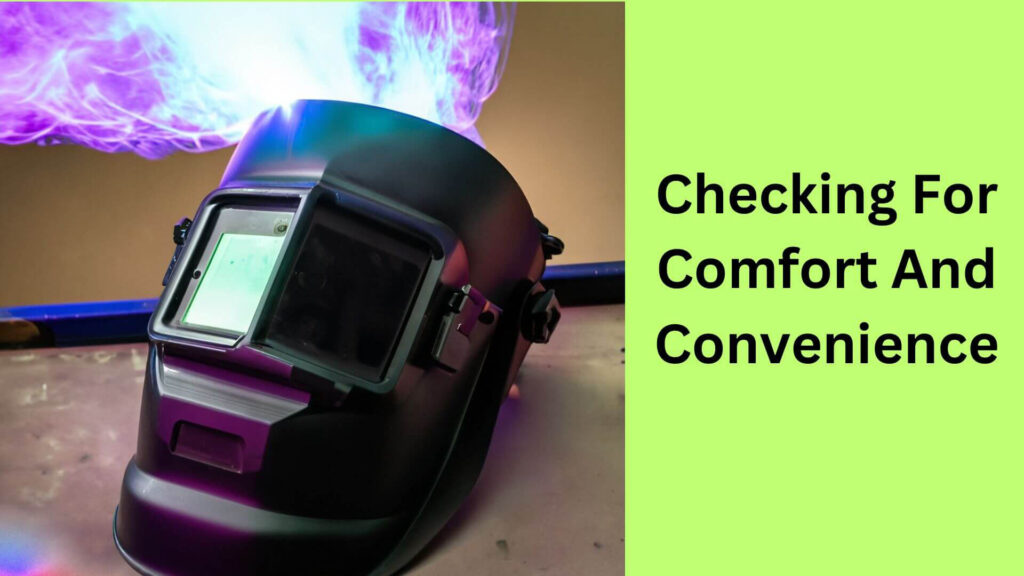
Welding requires a great deal of skill, patience, and time. It is a physically demanding task that can be both rewarding and exhausting.
Wearing an uncomfortable welding helmet for prolonged periods can add to the strain and make the welding process more difficult and unpleasant.
Welders must prioritize comfort when choosing a welding helmet to ensure a productive and comfortable welding experience. Here are some factors to consider when selecting a welding helmet.
Read More: Clear Vision, Safe Welds: How to Prevent Welding Helmet Fogging?
Factors To Consider While Choosing A Comfortable Welding Helmet
- Adjustability: A good welding helmet should have adjustable headgear, which allows the wearer to customise the fit for maximum comfort.
- Padding: The helmet should have additional padding to reduce pressure on specific head areas and prevent discomfort or pain.
- Weight: The weight of the welding helmet plays a critical role in determining its comfort. A heavy helmet can contribute to neck and shoulder pain.
- Balance: Consider the balance of the helmet. A well-balanced helmet distributes the weight evenly, reducing pressure points and contributing to comfort.
- Breathing: A good helmet should have proper ventilation to prevent fogging, overheating, or difficulty breathing.
- Noise: Welding can be noisy, but a helmet that muffles sound too much can be disorienting. A helmet with a moderate noise reduction rating is ideal.
Read More: Charging Your Welding Helmet: What You Need to Know
Evaluating The Convenience Of A Welding Helmet
The convenience of a welding helmet is equally critical. The helmet’s size, weight, and storage options are vital considerations when choosing a comfortable helmet.
- Size and shape: A smaller, lightweight welding helmet is more convenient to wear, and a streamlined design increases visibility and improves performance.
- Storage options: Welding helmets are an essential investment. A good welding helmet should have an easily accessible storage area, such as a helmet bag, to keep it safe and secure when not in use.
- Lens replacement: A helmet with easily replaceable lenses can save a welder time and money.
- Power source: The power source of a welding helmet can affect its convenience. A self-powered helmet minimises the need for battery changes, making it more convenient for welders.
- Controls: The helmet controls should be easily accessible and straightforward, allowing the user to adjust the settings during work.
Choosing a good welding helmet requires careful consideration of both comfort and convenience. Welders must prioritize these factors to ensure a pleasurable and productive welding experience.
Read More: Shielding Sparks: How Long Should a Welding Helmet Last?
How Do You Ensuring Proper Fit And Visibility?
A welding helmet is a crucial investment for anyone in welding. It not only protects your eyes and face from flying sparks, but it also helps prevent radiation burns and fumes. One of the critical factors in making sure a welding helmet works is ensuring that it fits properly.
A poorly fitting helmet is uncomfortable and poses a safety risk. Here are a few things you should consider when fitting a helmet:
- The helmet should fit securely on your head without any wiggle room.
- It should sit comfortably on your forehead without tilting forward or sliding down.
- The headgear should be adjusted so that it sits snugly on the crown of your head.
Read More: Rapid Response: The Swift Safety of Welding Helmets
1. Measure Your Head And Select The Appropriate Helmet Size
To ensure your helmet fits correctly, you need to measure your head. Here’s what you need to do:
- Take a tape measure and place it an inch above the eyebrows.
- Wrap the tape measure around your head, ensuring its level.
- Note the measurement and compare it to the manufacturer’s sizing chart.
- Choose the size that corresponds to your head measurement.
It’s important to note that not all welding helmets come in standard sizes. So, choose a helmet that offers adjustability for a more precise fit.
2. The Importance Of Evaluating Visibility Through The Lens, Determining Peripheral Vision And Ensuring Proper Angle Of The Helmet
A welding helmet with a poorly functioning lens can cause significant visibility problems, putting the welder at risk. The welding lens must offer clear visibility without any distortions or scratches. Here are a few tips on evaluating visibility through the lens:
- Check for any scratches or dirt on the lens, which can obstruct your view.
- The lens shade number should be appropriate for the work you are doing.
- The helmet should allow enough peripheral vision to remain aware of your surroundings.
The helmet’s angle is also critical for proper functionality and operator safety. If the helmet is incorrectly positioned, it can affect visibility and expose the face or neck to fumes or radiation.
- Ensure the helmet is in the correct position and doesn’t obstruct your vision.
- The helmet should not be too close or far from your face to allow for adequate airflow and reduce the risk of fume inhalation.
- Adjust the headgear for a secure fit, ensuring it doesn’t move around during welding.
By following these simple tips, you can ensure that your welding helmet works correctly and provides adequate safety and protection when welding.
Read More: Unveiling the Vision: Improving Welding Helmet Visibility
Checking For Durability And Maintenance
A durable welding helmet is essential for welders’ safety, ensuring protection against the harmful effects of welding, such as radiation, spatter, and fumes. Often, welding occurs in intense environments that can cause damage to the helmet’s construction, resulting in the helmet’s wearing down faster and eventually ceasing to work.
This highlights the importance of a durable welding helmet in prolonging the helmet’s life and the welder’s protection.
Read More: Step-by-Step: Installing Cheater Lens in Your Welding Helmet
Factors To Consider While Choosing A Durable Welding Helmet, Including Material, Construction, And Warranty
Choosing a reliable and durable welding helmet requires careful consideration of several aspects, such as material, construction, warranty, and personal preferences.
Material: the material of the welding helmet plays a vital role in determining its durability. Plastic helmets are popular but less durable than those made from fibreglass or nylon. A durable welding helmet can withstand heat, impact, and harsh conditions, so choose a helmet made from sturdy and resilient materials.
Construction: constructing a welding helmet also affects its durability and effectiveness. High-quality helmets feature an ergonomic design that optimizes comfort, breathability, and protection. Ensure the helmet offers a proper and secure fit, with good head and neck support.
Warranty: always check the warranty provided by the manufacturer, which is a testament to the product’s reliability. A reputable manufacturer will ensure the helmet’s durability and provide an excellent warranty to support their claim.
Tips To Ensure Proper Maintenance Of A Welding Helmet, Including Cleaning, Storage, And Replacing Worn-Out Parts
To keep the welding helmet in tip-top shape, proper maintenance is necessary. Here are some tips for maintaining a durable welding helmet:
Cleaning: after every job, clean the helmet’s inner and outer parts, especially the lens. Use a soft cloth and mild detergent for proper cleaning, and avoid using harsh chemicals that may compromise the helmet’s durability.
Storage: avoid exposing your helmet to extreme temperatures, such as direct sunlight or icy conditions, as this may damage the helmet’s construction. Store the helmet safely in a dry and excellent location, with the lens facing down.
Replacing worn-out parts: the helmet should be checked regularly, and worn-out parts such as the lens or headgear should be replaced whenever necessary. This ensures the helmet maintains its durability and safety features, protecting the welder while on the job.
A durable welding helmet is the cornerstone of welders’ safety and prolongs the helmet’s lifespan. Choose wisely by factoring in material, construction, and warranty. Proper maintenance is also crucial, and welders should clean the helmet regularly, store it in the proper conditions, and replace worn-out parts.
Frequently Asked Questions Of How To Tell If A Welding Helmet Is Working
How Do I Know If My Welding Helmet Is Working Properly?
When you turn on your helmet, look for a clear view, consistent shade, and no cracks on the lens.
How Often Should You Replace Your Welding Helmet?
If your welding helmet shows any signs of wear and tear, such as a damaged lens or headgear, you should replace it immediately.
Can I Use A Welding Helmet For Grinding Or Plasma Cutting?
Yes, you can use a welding helmet for grinding or plasma cutting, but you must use the right lens shade.
What Is The Ideal Shade For Welding Helmets?
The optimal shade for welding helmets depends on your welding process, but the range can be between 7 to 14.
How Do I Maintain My Welding Helmet?
Clean your welding helmet regularly, check for damage or wear and remove any stickers from the lens. Store it properly to avoid any scratches.
Final Word
After reading this comprehensive guide on telling if a welding helmet is working, you should have the necessary knowledge to ensure your safety while welding. Remember to inspect the helmet before each use, test the sensors, and replace defective parts.
Always follow the manufacturer’s instructions and safety guidelines for your specific welding helmet model. Prioritising your safety when welding is crucial, and having a properly functioning helmet is a great place to start.
By being mindful of possible malfunctions and preventing them, you can enjoy safe and efficient welding experiences.
With the right equipment and knowledge, you can confidently take on any welding project, knowing you are well-equipped to protect yourself from harm.

Hey, I’m Hrithik Hossain. I am the head of helmethacks.com, which specializes in safety helmets. I am looking to connect with anyone interested in purchasing a helmet or who has any questions about different types of helmets. I have over 8 years of experience as a helmet expert, and I can’t wait to help you find the perfect helmet for you. I can help you with any questions regarding helmets, from the best brands to fitting, style, and more! I really enjoy keeping people safe by ensuring they have the best protection possible.


